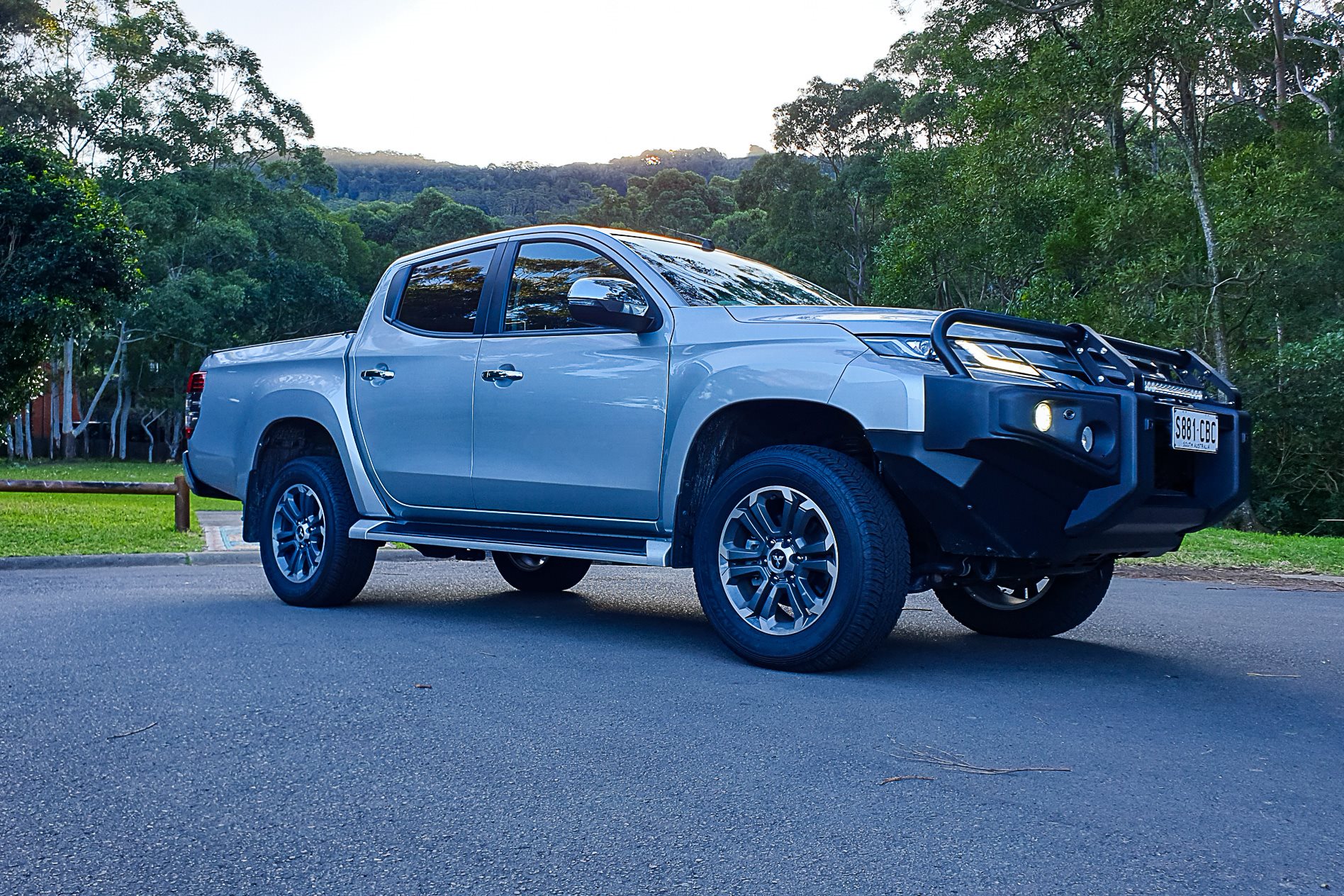
- Update one: Say hi to the Triton
- Update two: City slicker
- Update three: Hunkering down
- Update four – Groundhog Day
- Update five – Another quiet(ish) one
Update one: Say hi to the Triton
- ODO 4065km
- Km driven 543km
- Average fuel use 11.53L/100km
This time around, though, I’ve gone a vastly different direction. This is Mitsubishi’s Triton GLS dual-cab 4×4 ute, which sits plumb in the middle of the brand’s local line-up and which makes up a good proportion of sales for the popular dual-cab every month.

Day one – furniture removal
Like all Triton dual-cab 4x4s, it runs a 2.4-litre turbocharged four-cylinder diesel engine that uses a six-speed automatic transmission to send drive to one or both ends as required. It makes 133kW of power and 430Nm of torque, and should return a claimed 8.6L/100km on the combined fuel economy cycle.
The 1990kg Triton will also tow 3100kg – less than its rivals, but there’s a reason for that which we’ll get to in a future update – while lugging 795kg of payload (which includes you, your family and all your stuff). Without a trailer, the Triton can lug a claimed payload of 910kg.
It’s currently on dealer lots in NSW for $46,290 drive-away (January 2020), which nets you a pretty decent amount of kit for the money.
Of course, it kind of has to… the battleground for sub-$50,000 dual-cabs is bruising and bloody for the main protagonists, so spec lists have to be on point in order to sway the swinging punter.
Included in the price are a rear differential lock and Mitsubishi’s clever Super Select II 4×4 system that allows on-the-fly switching between rear-drive, high range 4×4 and low-range 4×4 at the twist of a dial.
A brace of LED exterior lighting is also included, with LED DRLs, headlights and taillights a part of the mix.
The steering wheel and gear shifter are leather-wrapped, the floor is carpeted, and rear-seat passengers get a USB charging point and oddly shaped but effective air vents in the roof.
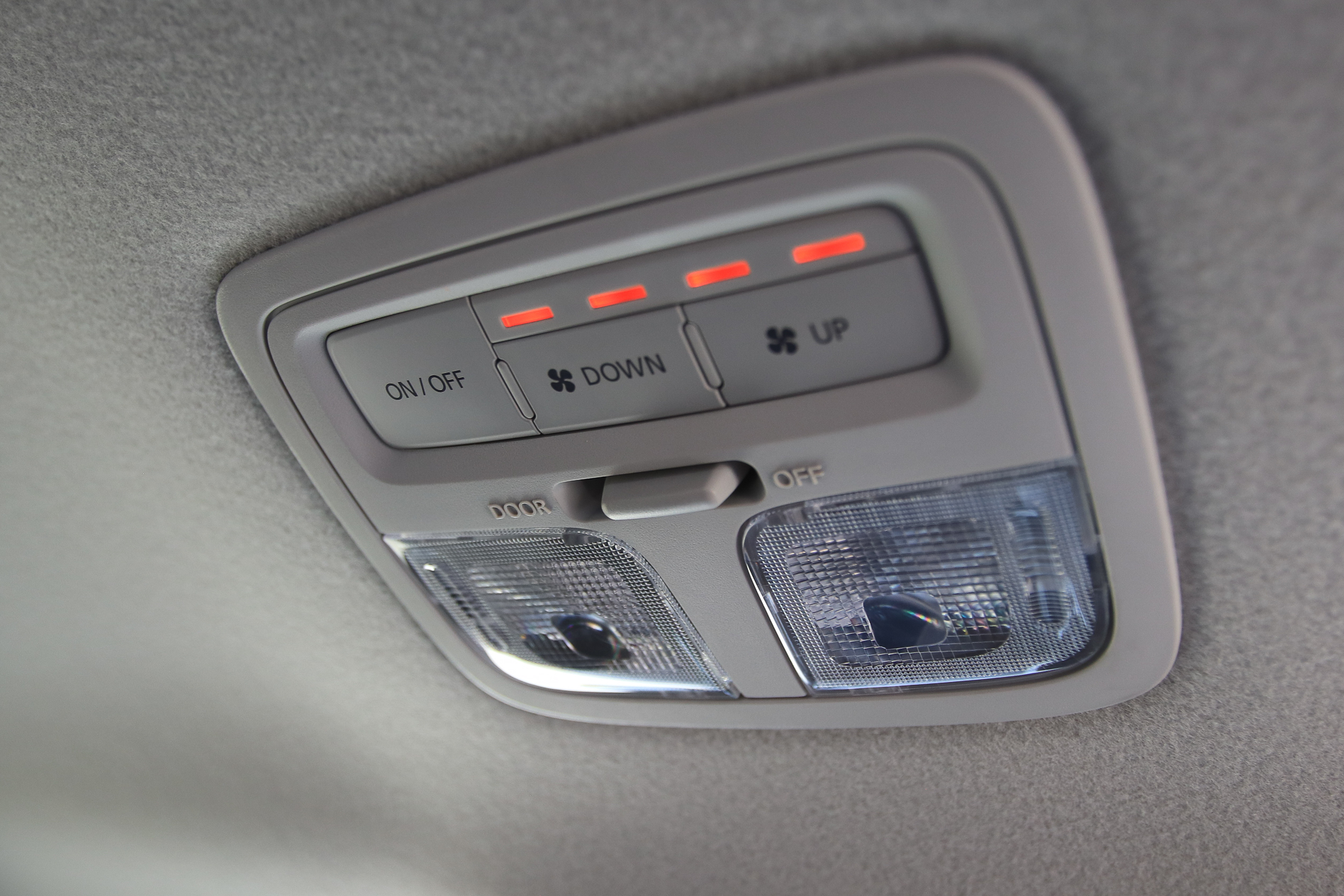
The rear vents are controlled from this roof-mounted panel
The GLS also comes with high-grade cloth upholstery, Apple CarPlay and Android Auto, keyless entry, dual-zone climate control and a raft of safety tech that includes AEB, rear cross-traffic alert, blind-spot monitoring, trailer sway control and even accidental acceleration mitigation. This, for me, makes for a pretty decent set of kit.
It misses out on a few things; electric driver’s seat adjustment for one, while butt warmers are a personal favourite – but I’d need to opt for the GLS Premium, which nets leather upholstery with electric driver’s seat adjustment and heated front seats, a sports bar for the rear tray and a 360-degree camera for easier parking.
For me, though, I’d pocket the required $4000 uptick and deal with life sans a warm backside; I’m not a big fan of sports bars in ute trays, either, so I won’t miss that.
Our rig comes equipped with a few extras, including a $4200-odd bullbar with an additional pair of halogen driving lights, a $708 LED lightbar and a $1200-odd towbar kit. An old-school tonneau cover is included, but the tray has no liner.
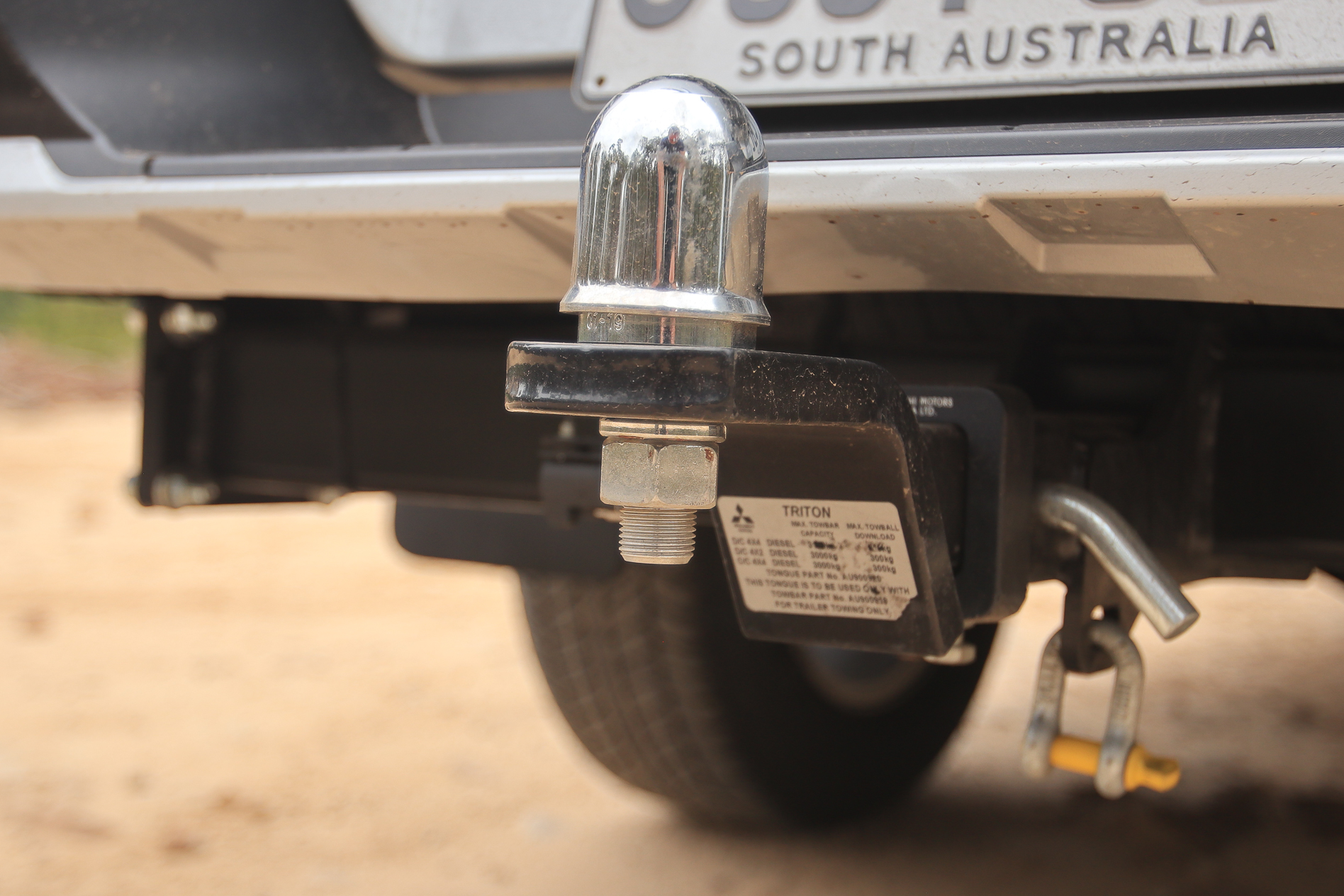
The towball cap is just five bucks from a dealer!
All told, the GLS compares pretty well in the value stakes when you look at its two key rivals in terms of specs and price, the Toyota HiLux SR and the Ford Ranger XL (equipped with the brand’s smaller, older 2.2-litre four-cylinder engine).
Steel wheels and entry-level cloth interiors are just the start, with neither offering much above AEB in the way of active safety mods, nor niceties like LED lighting or rear USB chargers.
There are other competitors in the space, notably the Ssangyong Musso XLV Ultimate Plus, which sells for a shade under $44,000 before on-roads, while the $46,900 Isuzu LS-M dual-cab ute would be only marginally more expensive once an automatic transmission has been added.
I’ve run one tank of diesel through the Triton – that’s 65 litres – and first impressions are mostly good. It’s taken a bit of time to get the seat position just so – a lack of meaningful reach adjust on the steering column is a small frustration, but I’ve found a decent compromise.
I love the deep centre console bin, and the 7.0-inch screen, while a bit smaller than the average nowadays, works well for my preferred Apple CarPlay set-up.
My two live-in kids – Miss 13 and Master 17, both tall children – are happy enough in the rear, where they have their own fan control to use and a pair of USB ports to not squabble over. When the eldest child lobs home, they can all fit across the rear bench, but not for long.
The 2.4-litre diesel is gruffish, but its magic trick is an almost silent idle when off-throttle. It actually feels like a sailing mode in a more expensive car. Our first economy figure is higher than the claim by some distance – 11.5 versus 8.6 – so we’ll keep an eye on that.
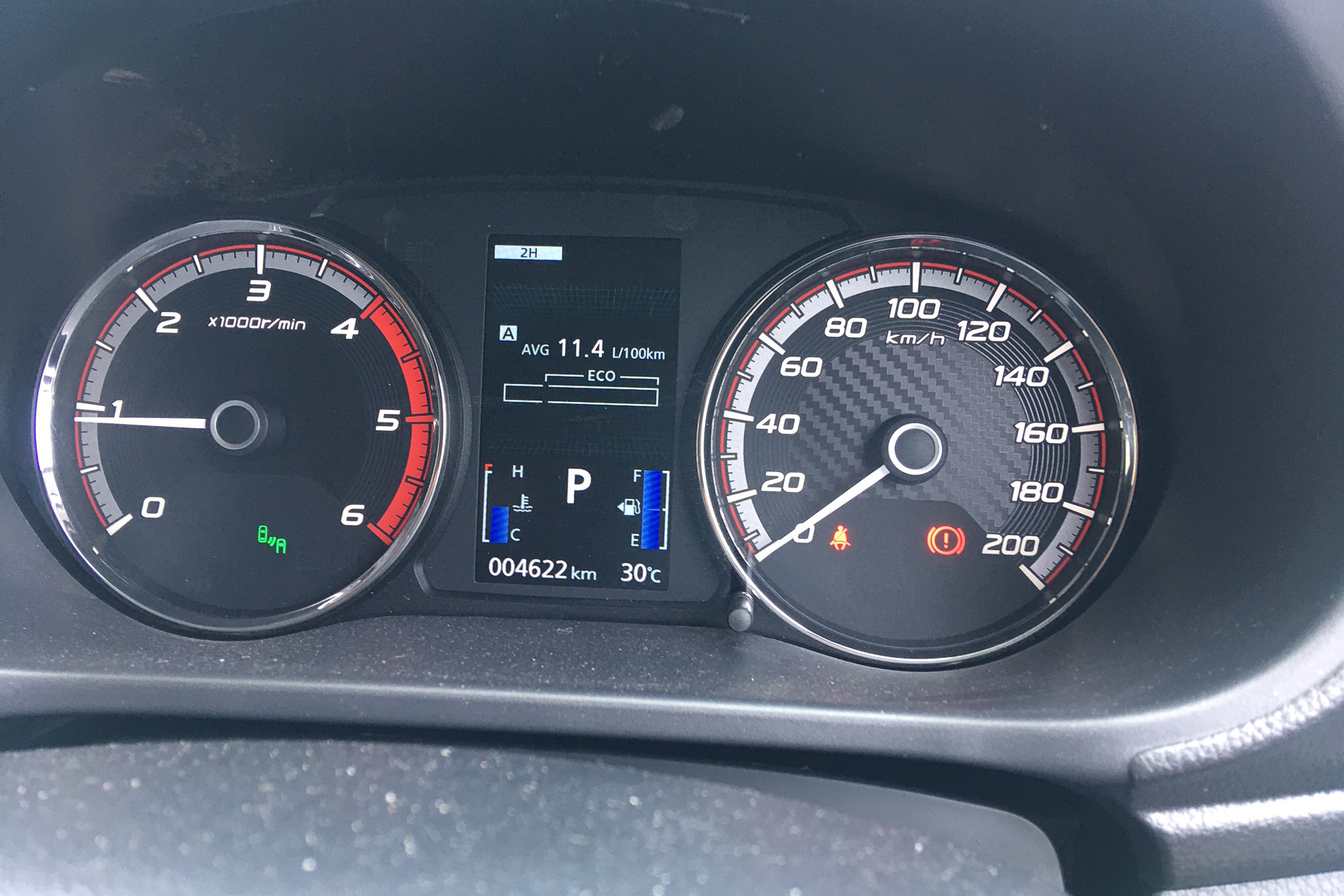
Real fuel figures and dash-indicated figures are impressively close
So what are our plans for the Triton? Well, it’s going to get pressed into largely civilian duties, plying its trade over my 145km-return daily commute, helping to ferry mountain bikes to fun places, moving our increasingly more useful race car to various events (and probably more workshops) and – hopefully – take a couple of weekend jaunts away to places that regular people can take their near-stock dual-cabs without damage to the car or themselves.
The first thing I do when I get a new long-termer
I tweak the stereo. I’ve done in every car I’ve driven over 20 years of reviewing cars and I’ll do it til my last day. Bass up, midrange up a bit less and treble equal or a mite higher.
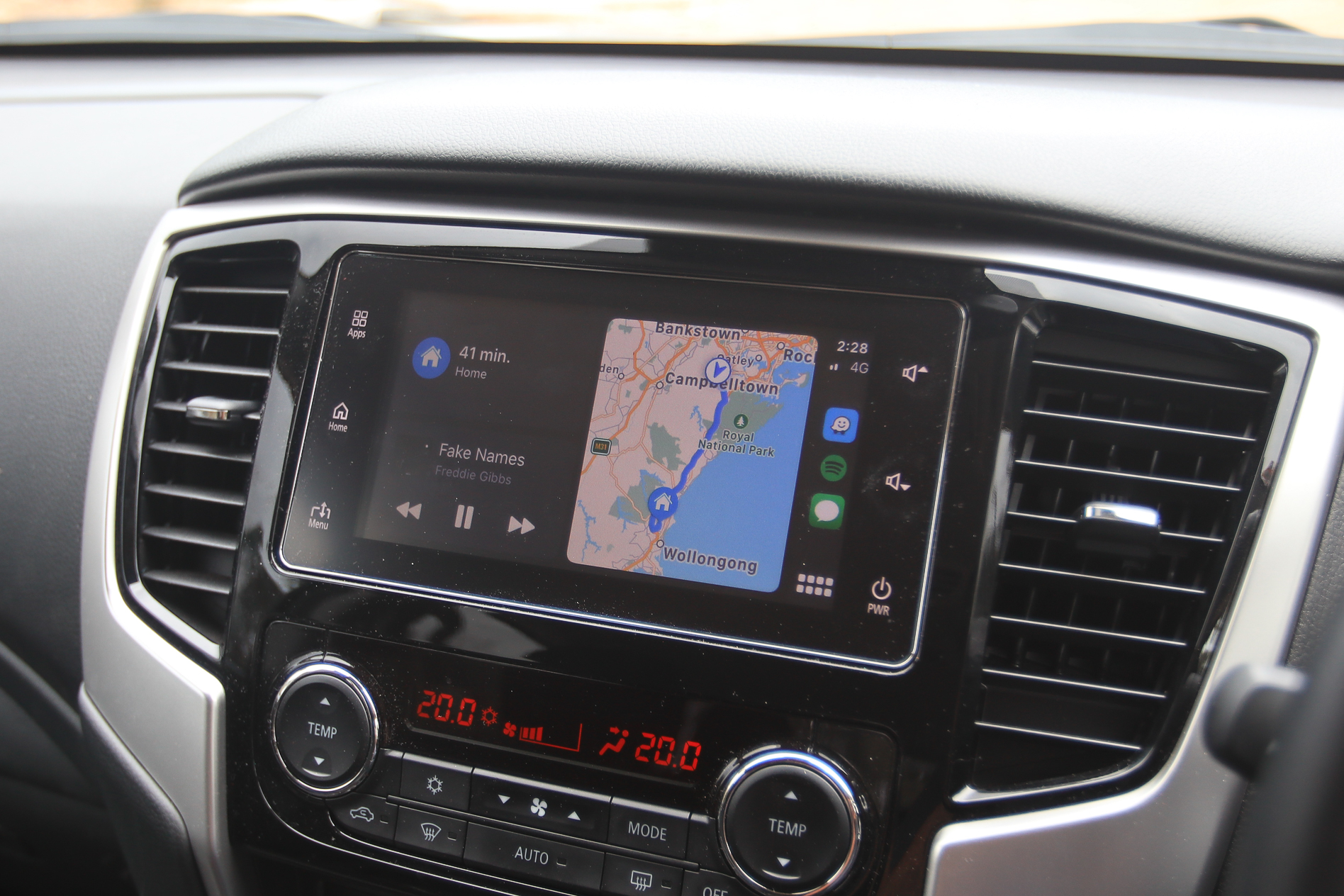
Balance between front and back? About centre. Sound stages and all that guff? I turn ‘em off, usually. The Triton runs a six-speaker system with digital radio and smartphone connectivity, and it sounds pretty handsome once my tweaks are applied.
Update two: City Slicker
- ODO 6122km
- Km driven 2057km
- Average fuel use 11.20L/100km
As well, a change of role here at WhichCar HQ has seen me hit the road a lot more than I usually would, schlepping from one side of the Sydney basin to the other. This has allowed me to form a pretty good snapshot of the Triton’s traffic mannerisms and shortcomings.
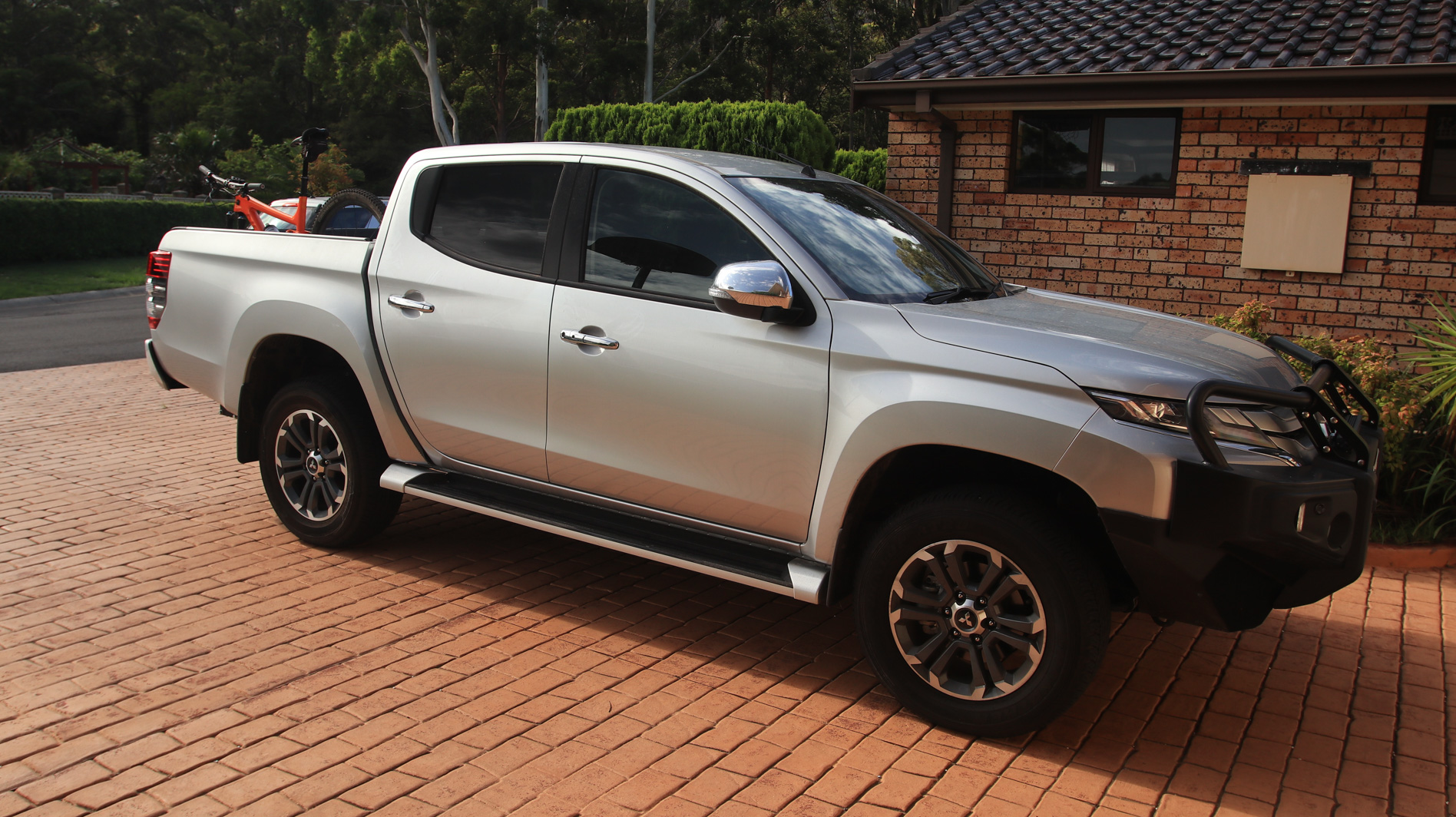
On the whole, though, it’s actually been pretty damn good. The highway-centric Dunlops, for a start, are a great spec for a vehicle where grip and handling are a natural enemy of its ride height, weight and high centre of gravity.
The sidewalls feel supple, the tread pattern is quiet on all but the nastiest of asphalt surfaces, and even in pelting rain, there is a lot of feel and grip to be had.
The rain in NSW has been bad enough for me to switch the Triton’s on-the-fly drive dial around to the 4H (all-wheel-drive) mode on more than one occasion, but the levels of grip afforded by the stock tyre set are genuinely impressive.
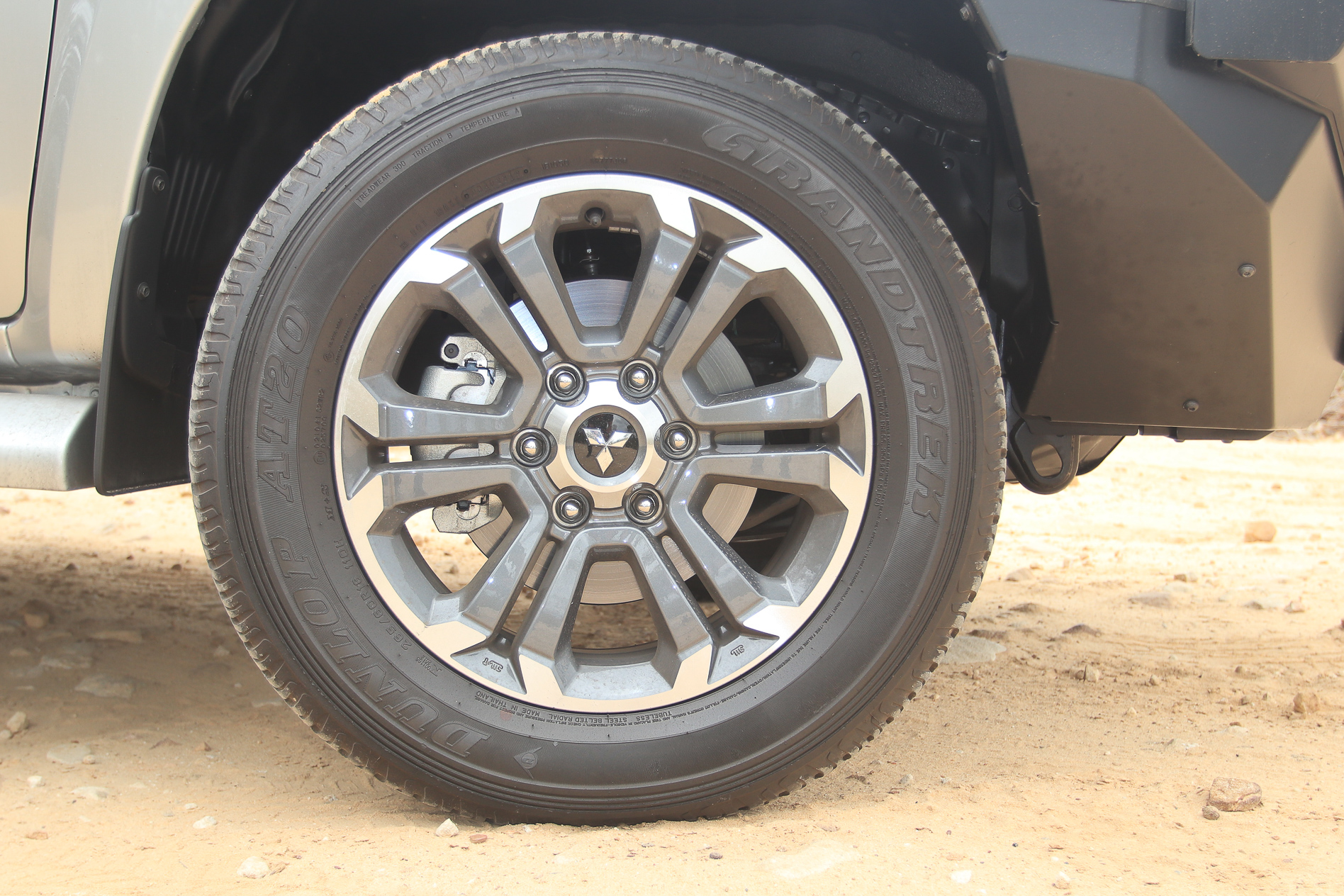
At 110km/h, the Triton is composed and impressively quiet, despite the bull bar up front and large mirrors. Speaking of the bull bar, it’s equipped with an array of LED lights that are bright enough to be visible from the next town over, let down only by a pair of halogen foglights that look very out of place amongst the diodes.
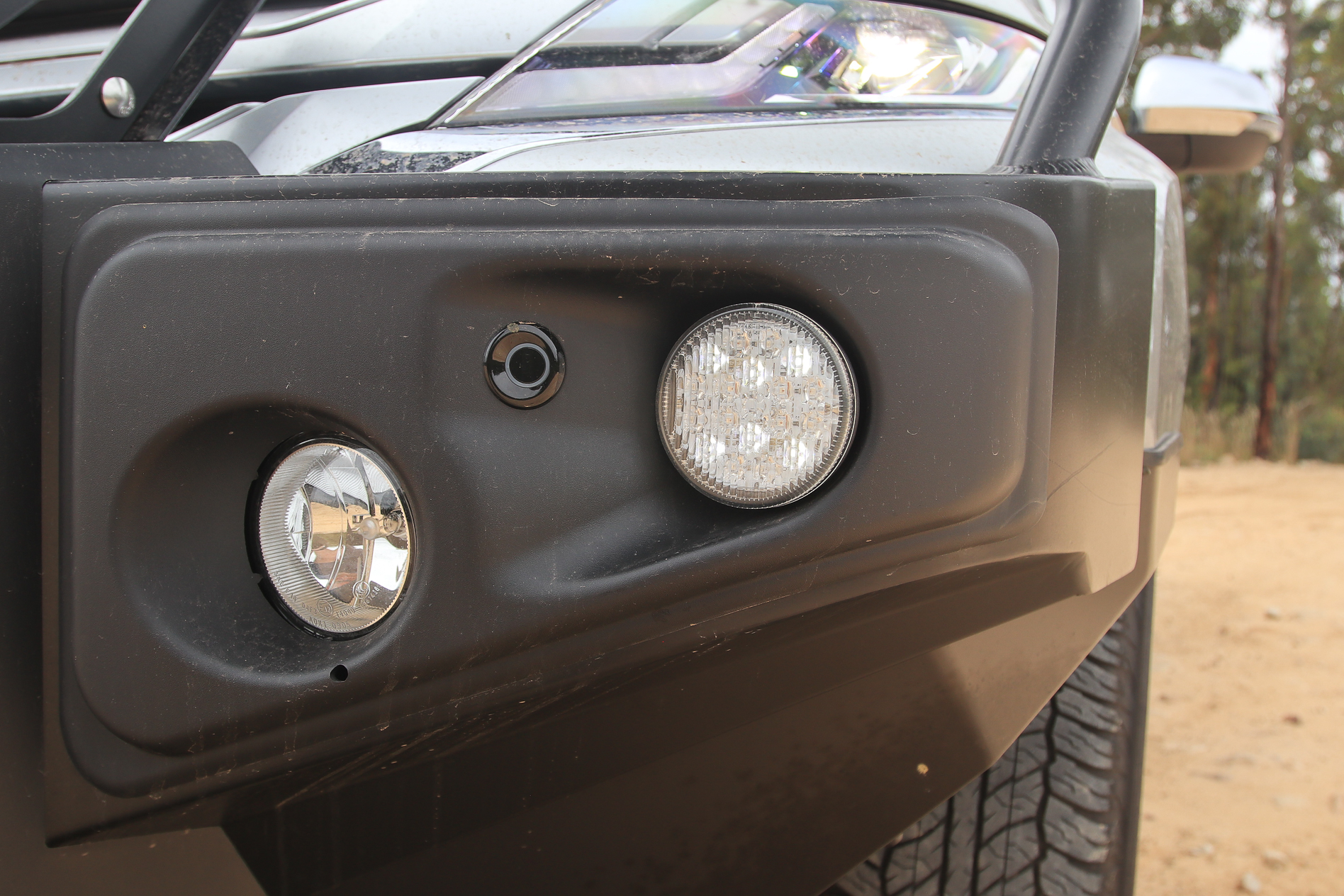
Around town, of course, the length of the Triton is a little daunting, especially when combined with slow-witted steering and a longish brake pedal. Parking is undoubtedly its biggest weakness; it’s long, there are a lot of turns lock to lock and the steering circle is B-I-G. Front and rear sensors and the rear-view camera are a great asset.
Throttle response, too, can be lacklustre as the little diesel spins up its turbocharger, but on the whole, it deals with the cut n’ thrust of the average commute surprisingly well.
And look… the bull bar is not a spec choice I’d opt for with a citified dual-cab. It’s a big chunk of metal which adds mass (which hurts fuel economy) and if I bump a rear quarter panel of a car while parking, it’s gonna stay bumped.
It is very neatly integrated, though, and it’s built to allow functions like the early warning braking system and the parking sensors to do their jobs.
The driving position for my 185cm frame is pretty good on the whole, with a couple of caveats. One; the sun visor can’t be extended to cover the side window, which is a real PITA. Two; the size of the box that the windscreen-mounted rain detector gubbins are housed in really restricts forward vision which, combined with a very raked windscreen, means that it forward vision is akin to peering through a gap in the fence at times.
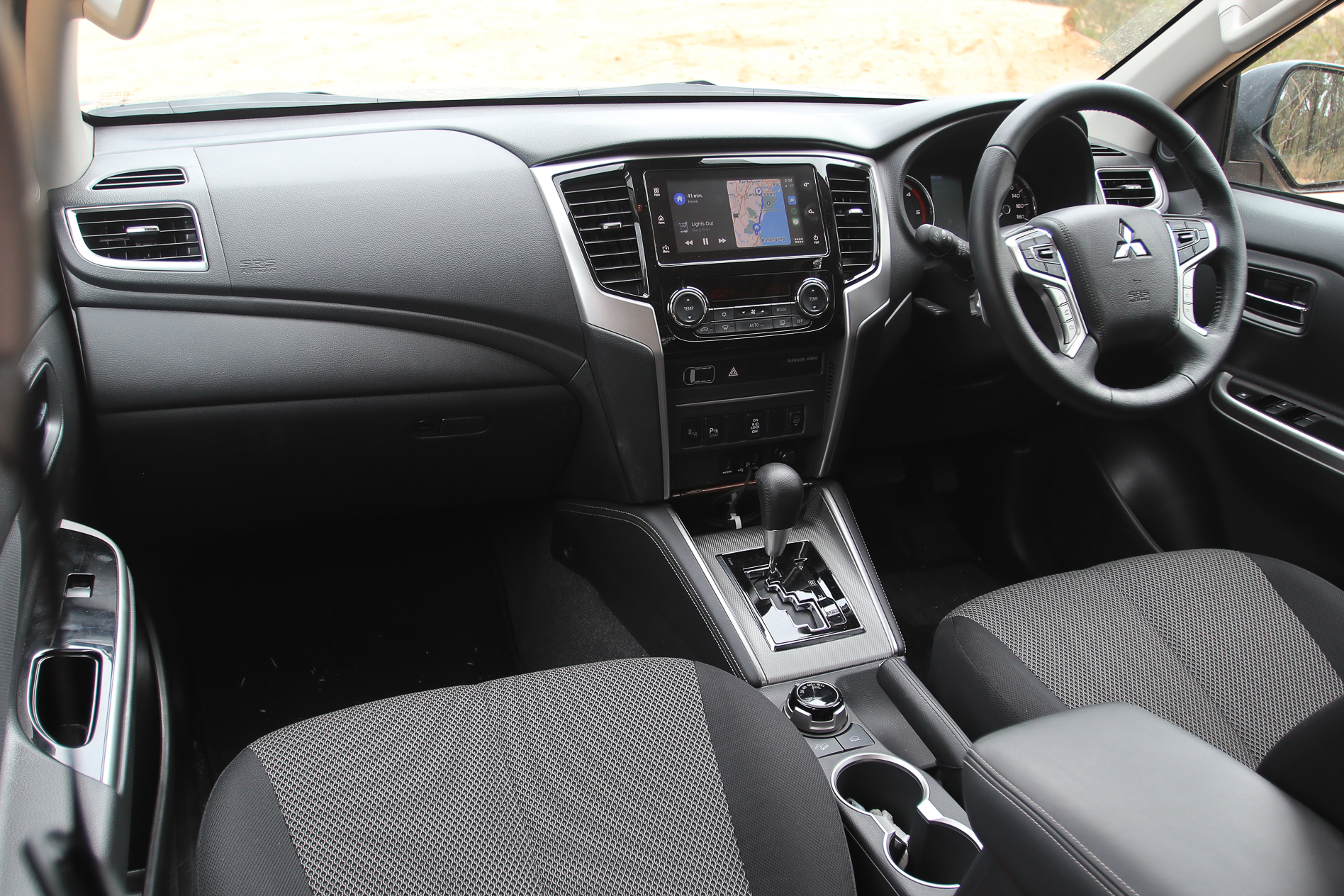
As mentioned previously, a bit more reach adjust on the steering wheel would suit me more, but reach and rake adjustment isn’t common in utes, so I shouldn’t complain too loudly.
Seat comfort is good, though the steps between fore and aft adjustment are quite wide, meaning that fine-tuning your position can be a challenge.
I miss having a digital speedo, and I also miss having a visual indication of what speed I’ve set the cruise control at (unless I’m being dopey and I’m missing it somewhere in the menu). I rely on my Apple CarPlay map apps to give me real-time GPS speed, though, so it’s not as much of an annoyance as it might otherwise have been.
Running CarPlay as my media player of choice means I haven’t actually used the multimedia system very much at all, so I’ll have to rectify that for the next update.
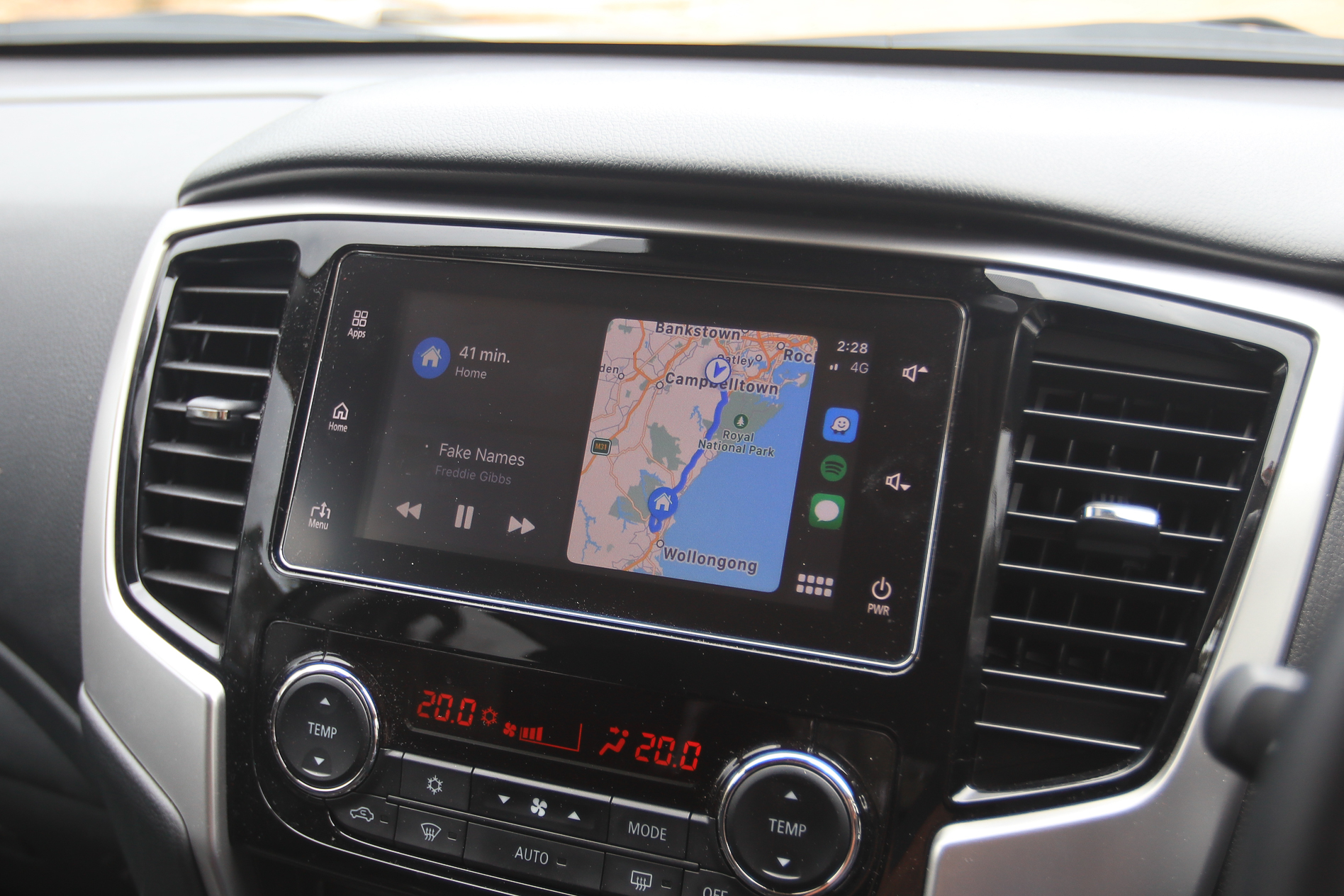
From a passenger standpoint, my diminutive better half struggles with ingress over the wide sill steps but is pretty comfy once aboard. Our back-seat pilots haven’t complained about their lot, though the roof-mounted fan system that they use is shockingly loud when turned up to even moderate speeds.
The rain means that the cargo of the Triton has been sadly underused, but I did receive an exciting package in the mail as this update fell due. Car cargo specialists Yakima has sent through a tailgate pad for us to use with the Triton! I’ll add a vid really soon of it on action.
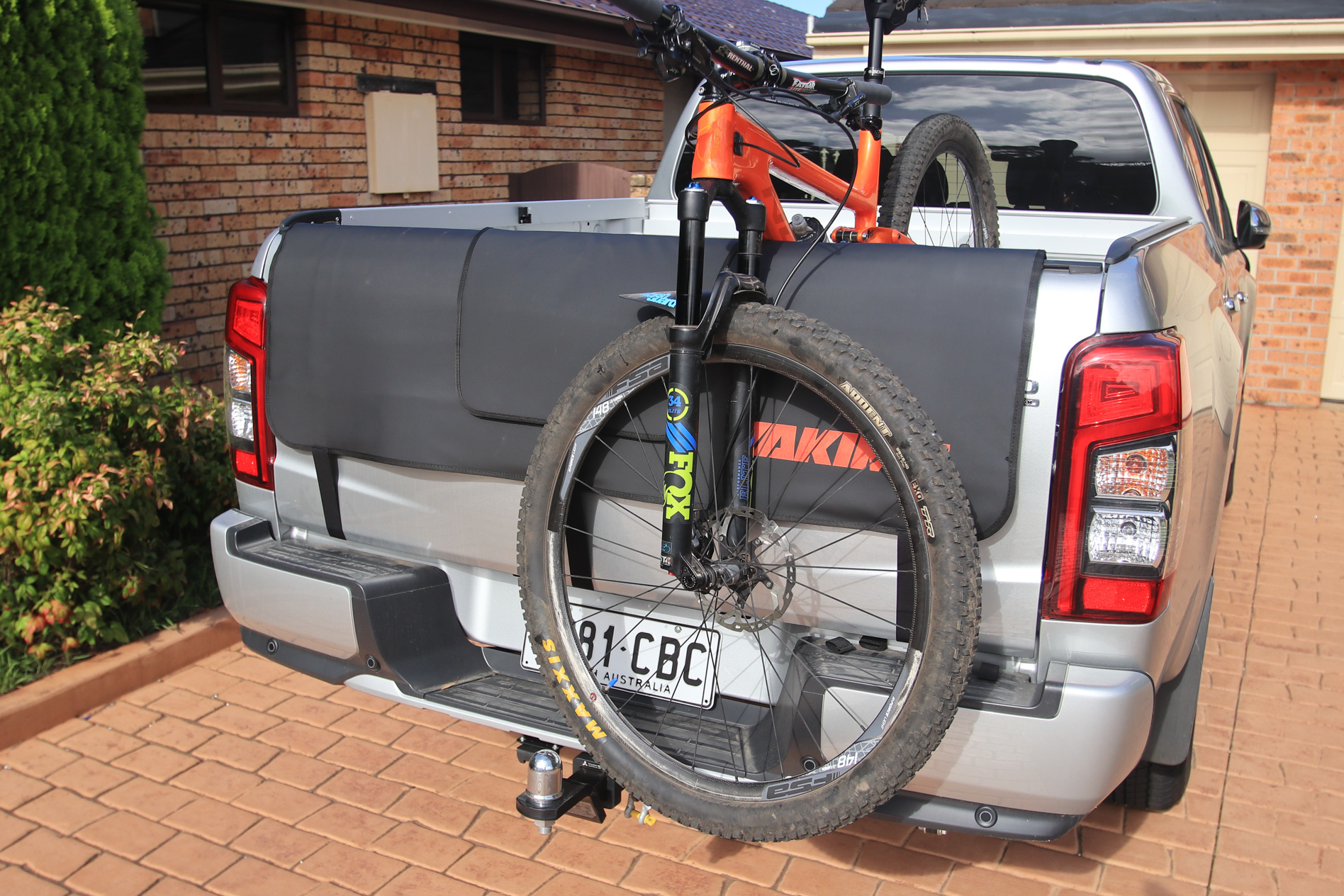
I’m also looking into the option of fitting a tailgate assist strut; the stock tailgate is heavy and slams down with a pretty violent thud.
Downsides? A squeak has started up in the rear end somewhere after all the rain we’ve had, so I want to whip it down to a dealer to see if there’s anything that can be done.
The Triton’s front suspension, too, feels a tad underdone in spring rate and damping which, while comfortable to drive at highway speeds, crashes awkwardly over slow bumps. Not much we can do about that, really… or is there? Stay tuned.
Update three – Bunkering down
- ODO 8514km
- Km driven 4749km
- Average fuel use 9.70L/100km
We’ve moved into a weird phase in our lives – while we shot this video, NSW was transitioning slowly into its current state of virtual lock-down. So what better time to take a load of rubbish to the local tip?
Because our tester will go back and be on-sold, I’m reluctant to do any unnecessary damage to its tray – which really highlights the need to decide what you’re going to do with the tub when you lay your money down.
The more affordable GLS makes do without a tub liner, exposing the silver duco to scratching, so we just tried to be as nice as we could. A factory tub liner is a $614 option, while a tie-down bracket system adds another $448 to the bill.
A spray-on liner would cost around $700 through most decent panel beaters, I reckon, though your results may vary. I’d be tempted to go for the spray-on liner, so I don’t have to sacrifice those vital centimetres of space to the plastic tub.
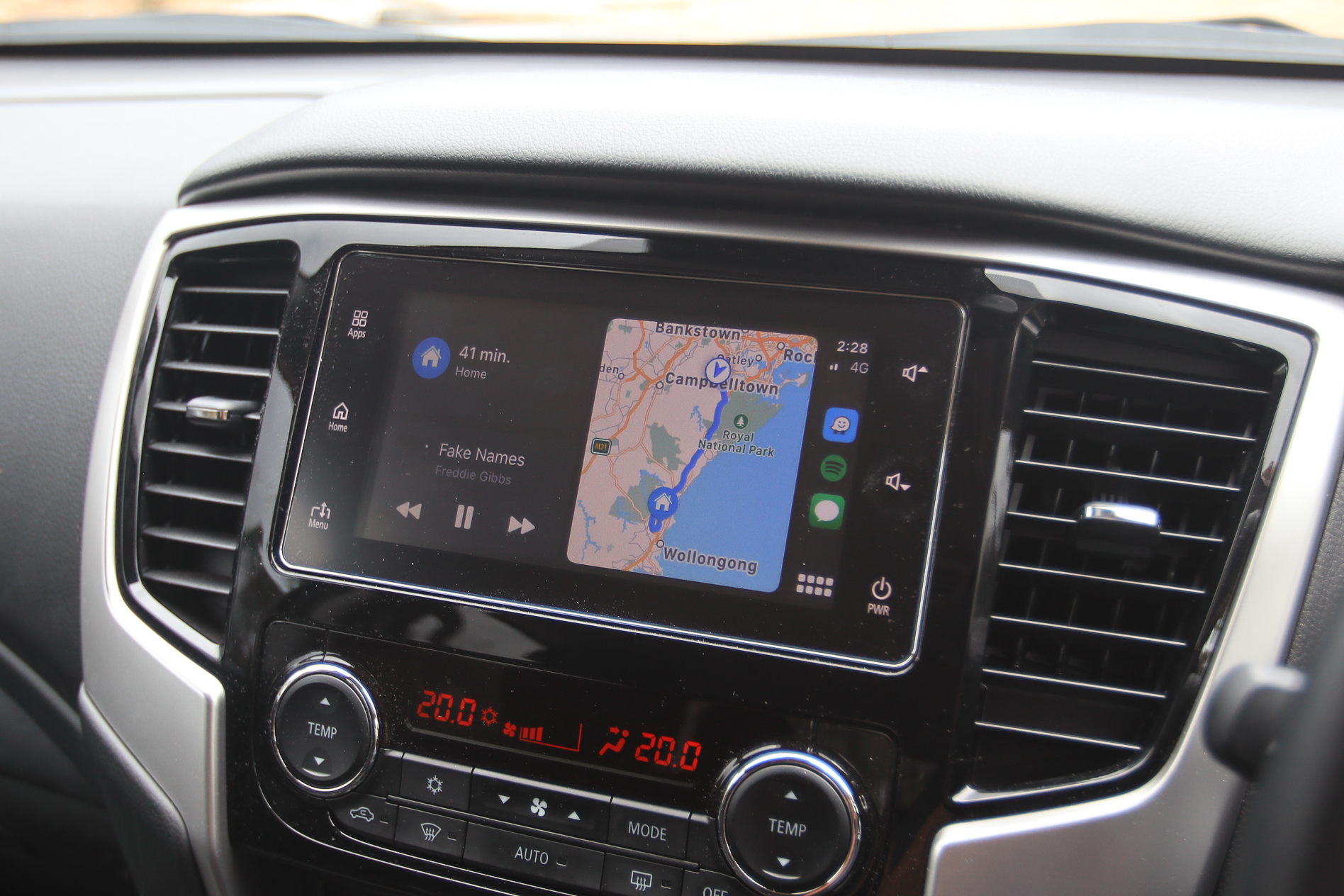
I’ve also been forced to swap phones, and unfortunately, I’m having a rotten time with Android Auto not working well at all. I find Android Auto a lot harder to use than Apple CarPlay (above), with dropouts and a poor interface my biggest bugbears.
This isn’t the car’s fault, of course, but it’s really denting my experience.
I spoke last time about the ride quality of the Triton, and we’ve actually performed a little experiment with the tyre pressures. Placard pressures are 32PSI all around, and bumping them up to 34PSI when cold gives the Triton a much more brittle, unsettled ride.
Bumping them back down to 33PSI from hot has worked very well… which tells me that the placard pressures recommended by Mitsubishi are, unsurprisingly, on the money.
Oh, and that squeak from the rear end? It’s gone away a bit, but it feels like it could be in the tailgate area. It takes a bit of effort to bang it shut, and I reckon a misaligned hinge is the culprit.
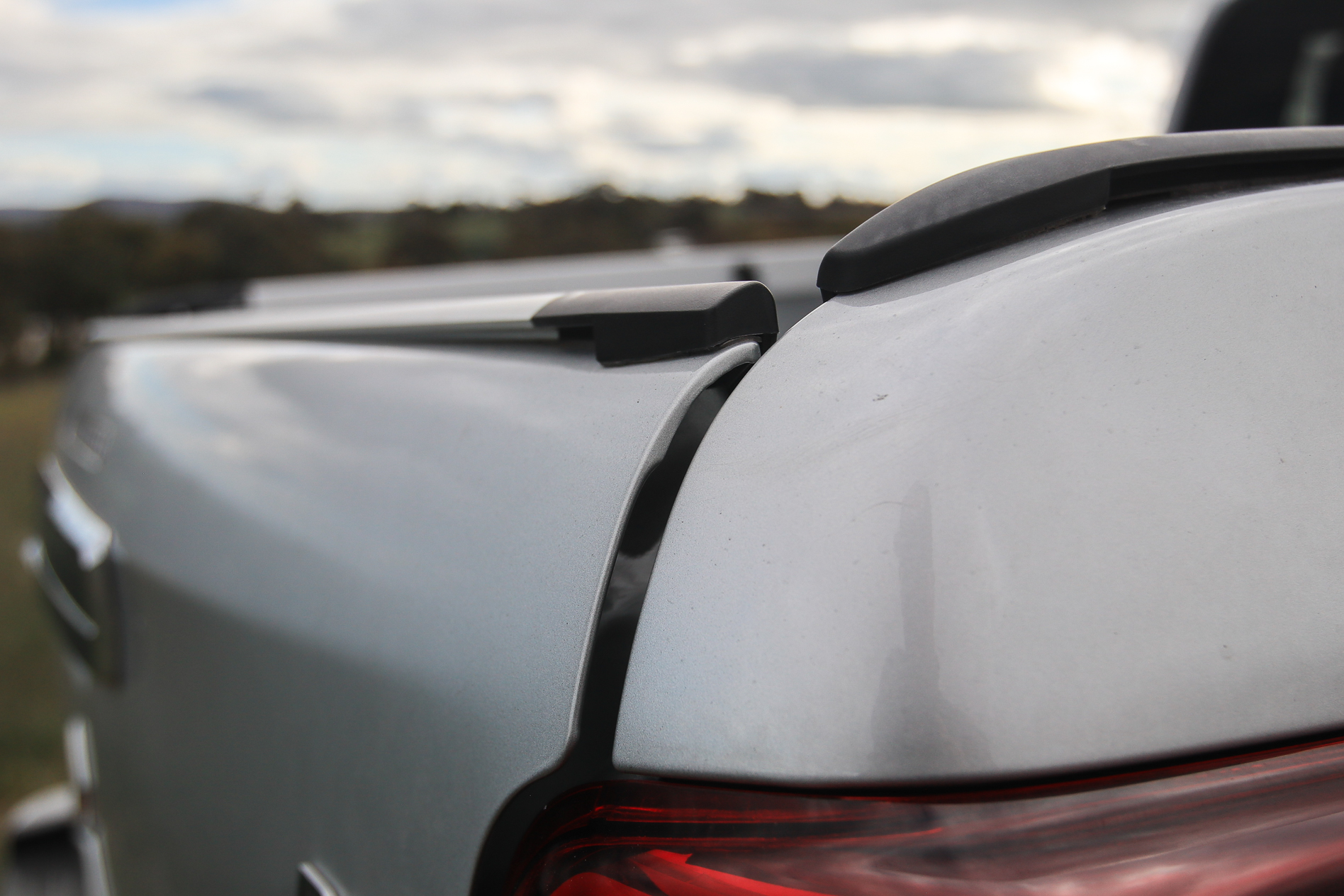
It’s also back in for a warranty fix on a wiring loom, and we’ll get a brake controller added – though taking the race car anywhere for the foreseeable isn’t on the cards, really…
Update four – Groundhog Day
- ODO 9510km
- Km driven 5745km
- Average fuel use 9.70L/100km
So, aside from the occasional shop for essentials, there’s not a lot to report.
I did manage to sneak Mighty Triton back in for a vital recall fix on its towbar wiring, and while it was in bits, it has had an extra bit of kit plumbed in as well.
A brake controller is essential if you want to tow to capacity – 3100kg in the Triton’s case – and Mitsubishi has fitted the clever Tow-Pro Elite system.
A bit of data; the gross combined mass (GCM) of a car is the maximum allowable combined mass of a towing road vehicle passengers and cargo in the tow vehicle, plus the mass of the trailer and cargo in the trailer.
GVM, meanwhile, is the maximum operating weight or mass of a vehicle as specified by the manufacturer, including the vehicle’s chassis, body, engine, engine fluids, fuel, accessories, driver, passengers and cargo, but excluding that of any trailers.

Maximum braked towing capacity refers to the advertised towing figure for a trailer fitted with electric brakes unbraked trailer capacities are far lower.Against a GVM of 2900kg and a GCM of 5885kg, the Triton has, according to Mitsubishi, a maximum payload of 640kg remaining for cargo and passengers.
So it’s not 3500kg, like the majority of its rivals, but Mitsubishi isn’t worried. It reckons the majority of people tow between one and 1.5 tonnes, while less than five per cent of customers tow even three tonnes.
We can – once we’re able to, of course – tow up to 3100kg, but our plans include a 700kg trailer and a 900kg race car… so almost half of what it can do.
Given we can’t try the device until we attach a trailer, here’s a little video of what it does.
Update five – another quiet(ish) one
- ODO 9560km
- Km driven 5805km
- Average fuel use 9.70L/100km
Meanwhile, the Triton has patiently sat in the driveway, waiting for – hopefully – one last mission before we part ways. At present, there’s a loose plan to hand Big T back over in Melbourne, which means a 1000km run south from WhichCar’s NSW base.
And it doesn’t necessarily need to be in a straight line, either…
In the meantime, though, I’ve had a dig underneath the Triton to see if I can trace the source of an annoying squeak that is upsetting the otherwise Zen tranquility of the Triton’s still-surprising quiet demeanour.
Unfortunately, the spring squeak is a) quite audible and b) beyond the capabilities of the average owner to sort out.
To my ear, it sounds less metallic and more like the squeak of a rubber bushing, and it could well be coming from around the top shock mount.
Some people have reported that there is a little packer, or divider, on the leaf spring (below) that can be the cause.
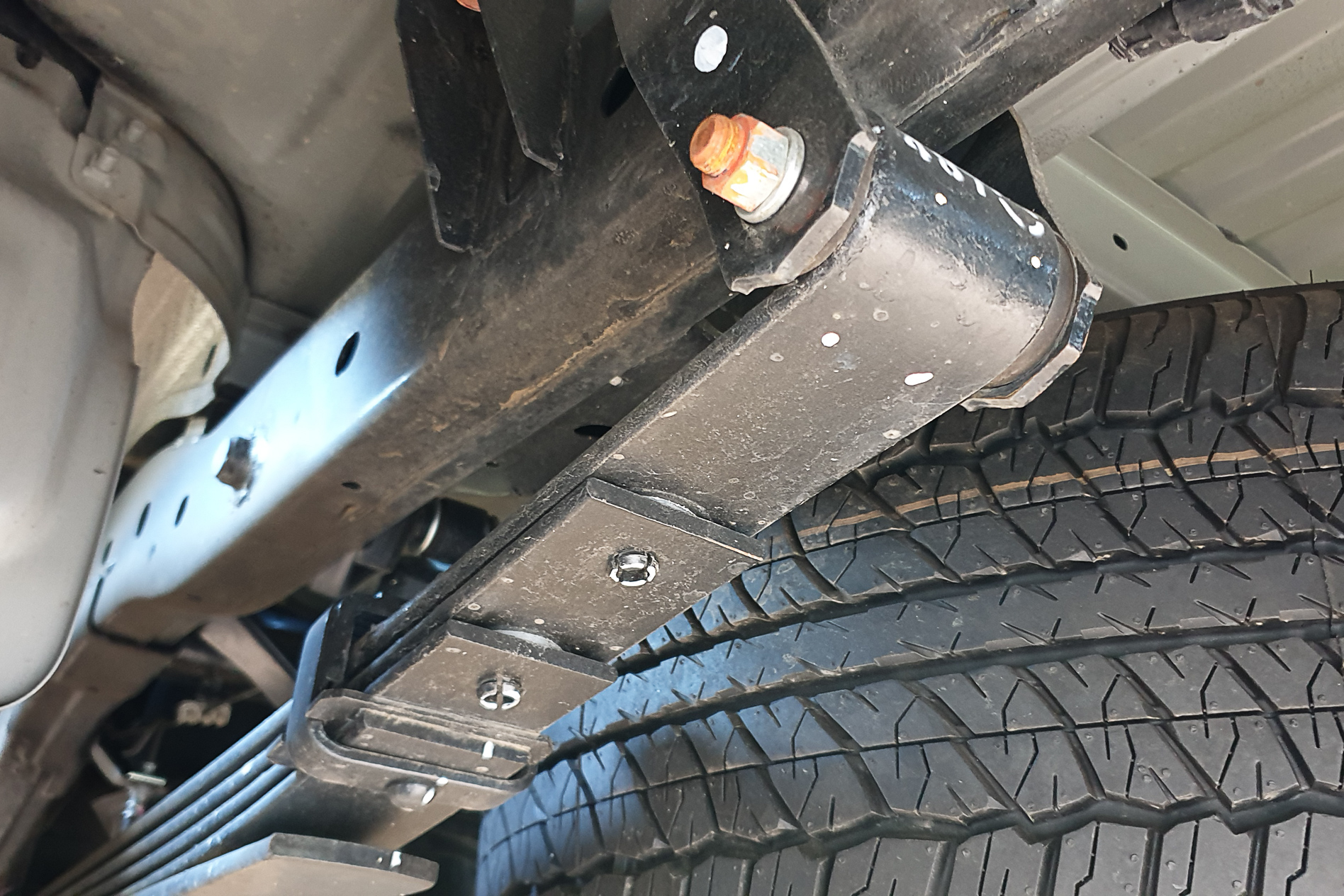
The shackle packer (the u-shaped thing in bottom left might be the culprit. Those nuts aren’t rusted, btw – they are painted
One thing I’m not going to do, though, is liberally spray everything with lube, because that will only serve as a magnet to dirt and dust, which will only make for more squeaks.
I’ve asked Mitsub HQ to let me know if there’s a fix in play and I’ll let you know next time how we’ve gone.



